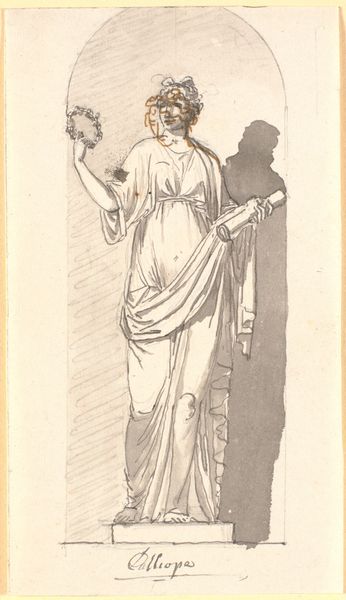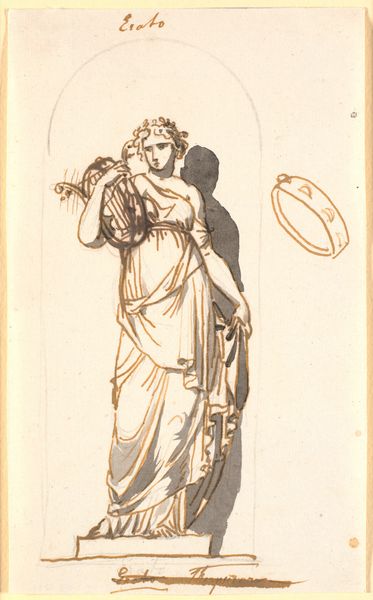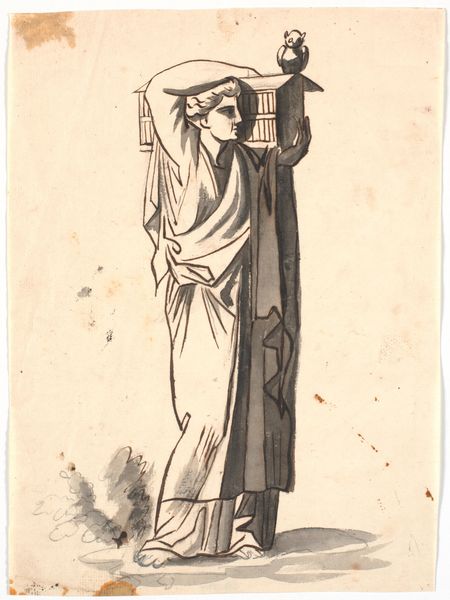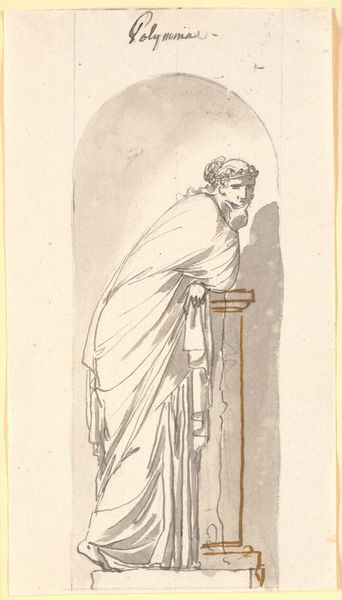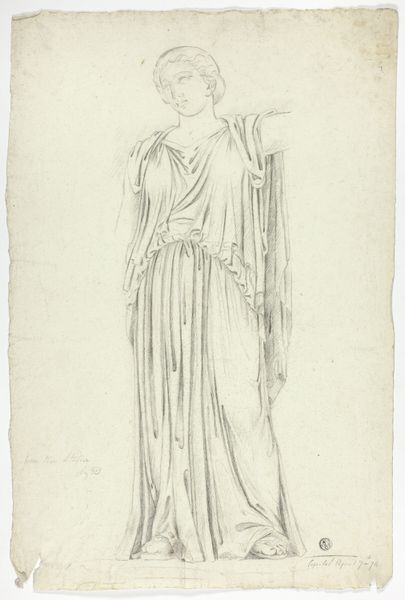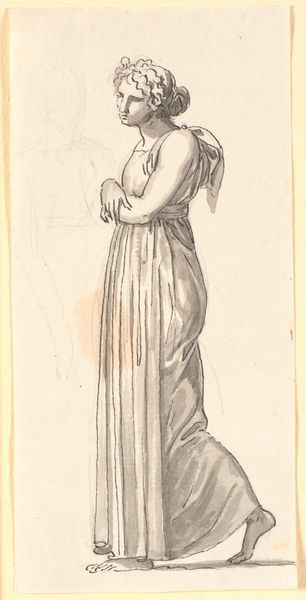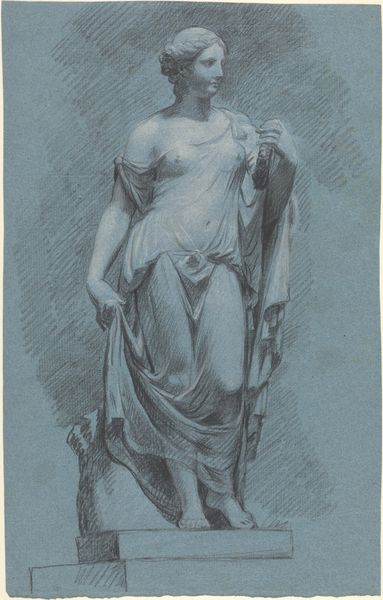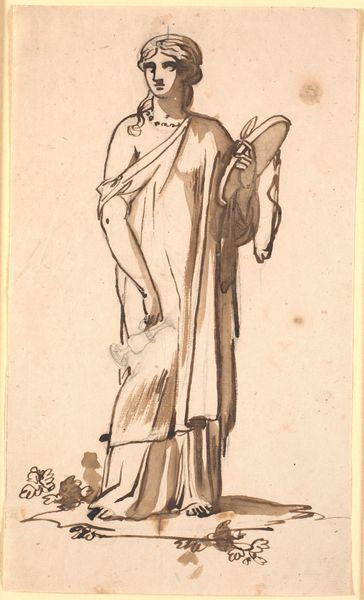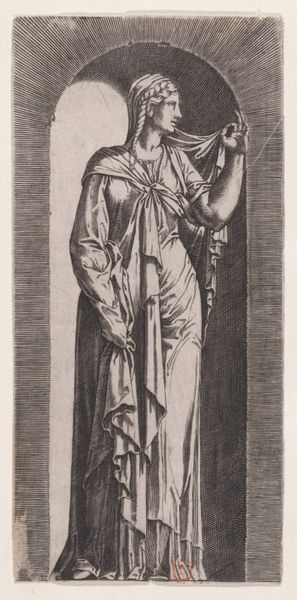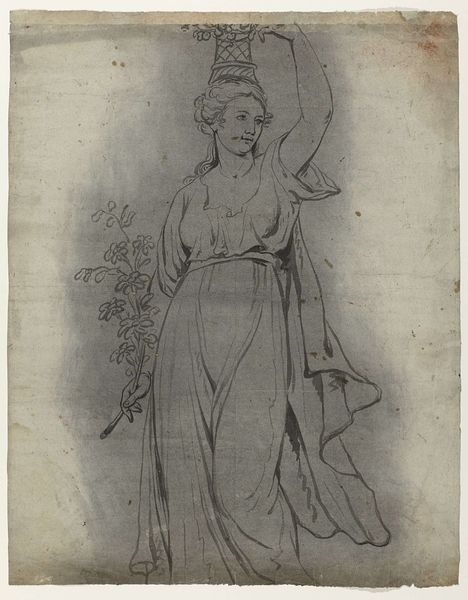
drawing, pencil
#
portrait
#
drawing
#
neoclacissism
#
classical-realism
#
figuration
#
pencil
#
history-painting
Dimensions: 209 mm (height) x 116 mm (width) (bladmaal)
Curator: This is Nicolai Abildgaard's drawing, "Urania as Statue in a Niche," created sometime between 1743 and 1809. The piece resides here at the SMK. Editor: The somber mood strikes me immediately. Its monochromatic pencil strokes on paper give a neoclassical edge; almost photographic, even though the medium is humble. It captures a sense of reverence. Curator: Precisely. Note how Abildgaard employs the artistic tenants of neoclassicism, exemplified in his approach to form, balance and subject matter, by reviving interest in classical antiquity. Here we see a pencil drawing of a neoclassical sculpture depicting Urania. Editor: As a drawing of a sculpture, this begs the question: why render something already materially present in three dimensions into a flat image, and moreover, by tracing simple lines? Does the choice of graphite reference its source as a material mined from the earth, ground, and formed as tool to replicate the appearance of another three-dimensional material--stone, most probably? Curator: I see your interest in the materiality, however the choice serves Abildgaard’s project. It captures an idealized representation and an economy of expression, as can be seen in the drapery and her serene expression. He evokes her divinity through artistic and philosophical contemplation. Editor: True. Note the subtle indication of space, merely implied and, therefore, indeterminate. Her pose feels monumental, although it's merely a sketch, while her marble statue might already monumentalize her existence and labor through stone in three dimensions. Her image then moves further away from a bodily reality. The process elevates rather than represents lived existence. Curator: I appreciate your highlighting how it is but a "sketch" since it's important to consider it as such, despite its high finish. He is working out the form of the goddess—her attributes are present, with one arm supporting a globe, representative of the cosmos under her gaze. It provides a space for philosophical rumination. Editor: A fitting rendering given its purpose, indeed. It is, upon reflection, also rather stunning when taking into account the context of its production within Neoclassical society; where value lies, at least from the vantage point of those who consumed it. Curator: Ultimately, we are offered a glimpse into Abildgaard's artistic process, witnessing how he distilled classical ideals through form, medium, and thematic selection. Editor: A journey of material and social elevation in service of something, from material to immaterial; earth to heavens; craft to art. Thank you for this revealing discussion.
Comments
No comments
Be the first to comment and join the conversation on the ultimate creative platform.
